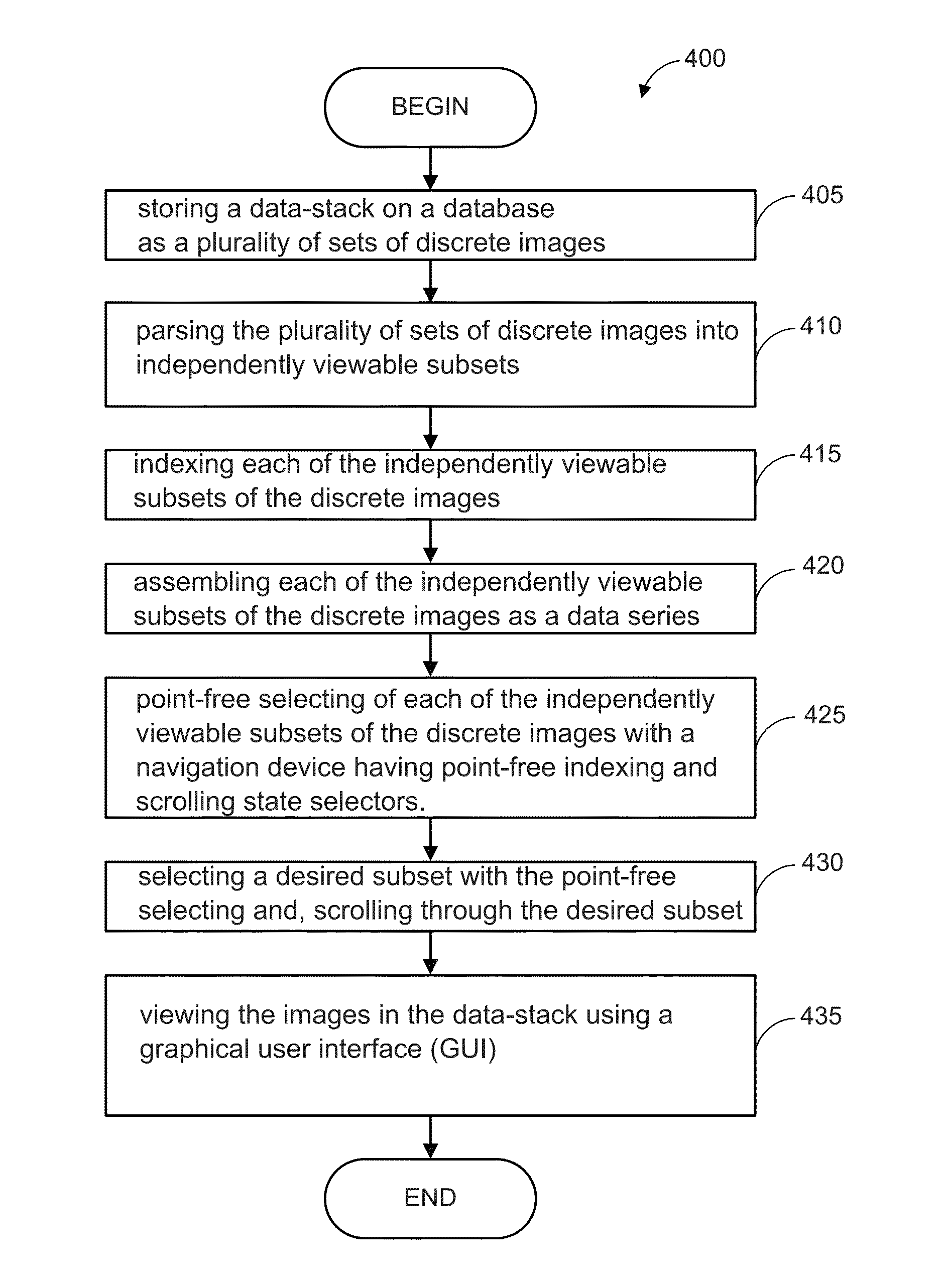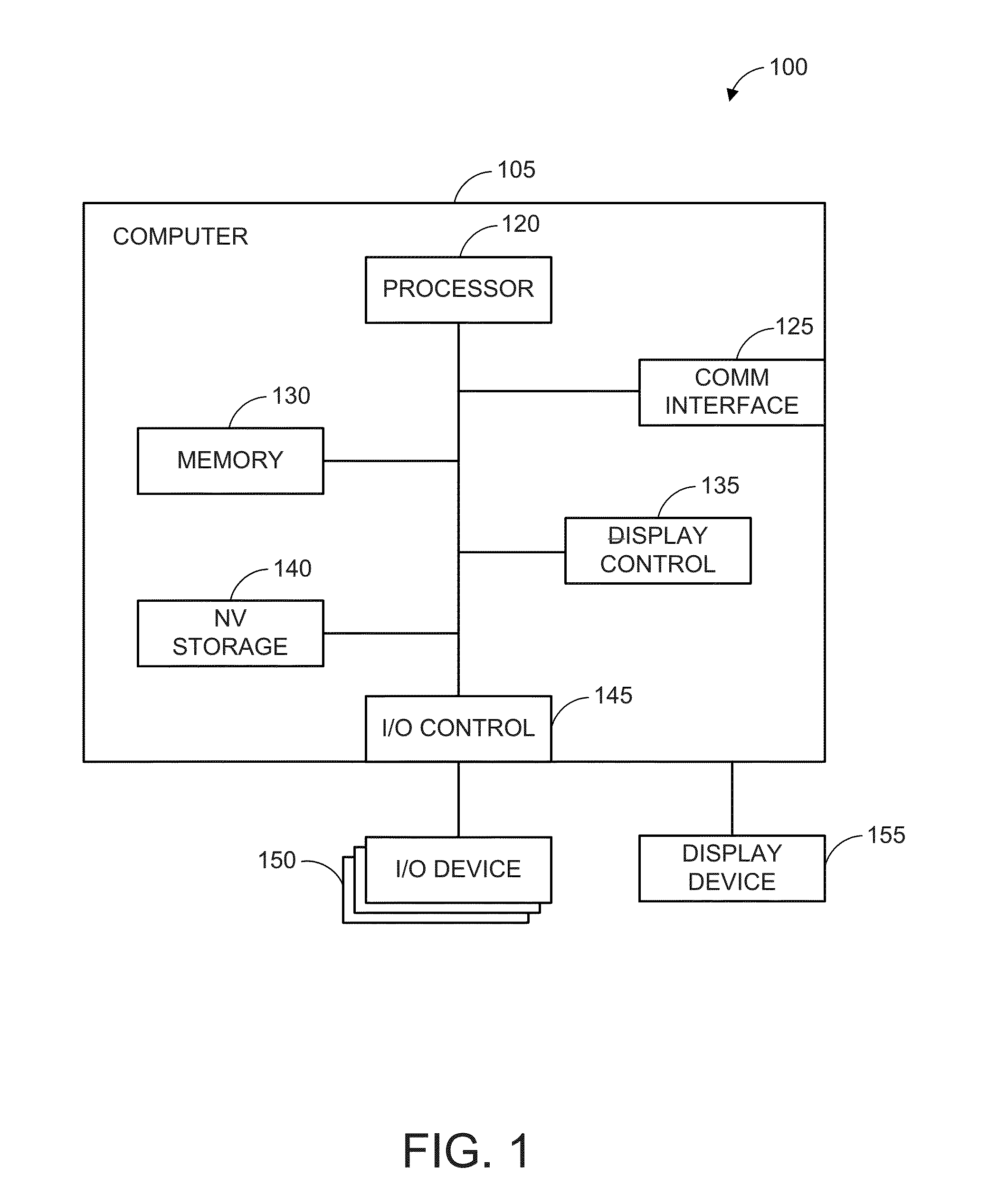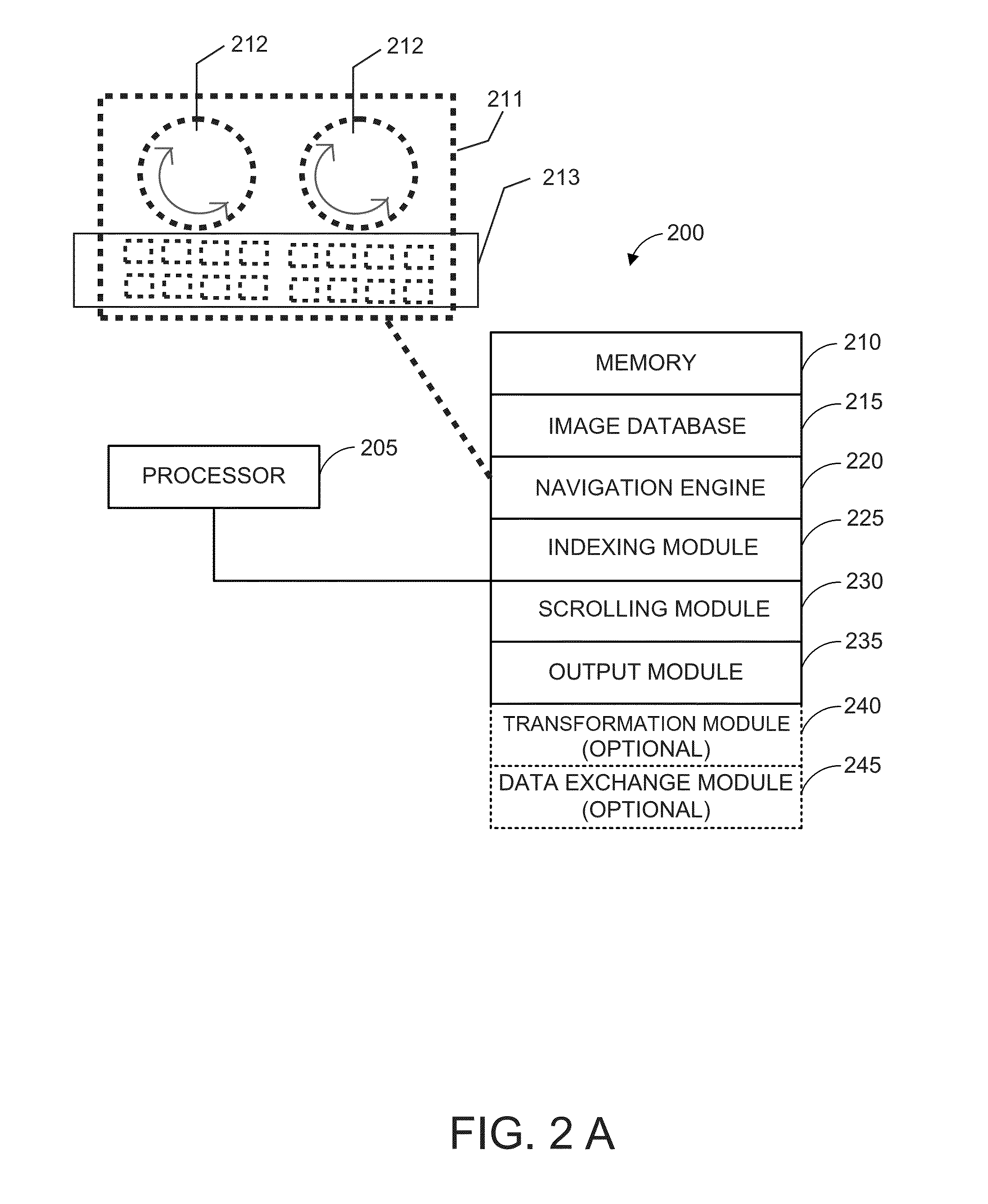Control system for governing and/or monitoring how an image data-stack is viewed
a control system and image data technology, applied in relational databases, database models, instruments, etc., can solve the problems of reducing the efficiency of radiology, and reducing the number of repetitions of movements. , the effect of eliminating the need for point-and-click
- Summary
- Abstract
- Description
- Claims
- Application Information
AI Technical Summary
Benefits of technology
Problems solved by technology
Method used
Image
Examples
example 1
The Ergonomic Workstation Reduces the Time Required to Analyze a Case
[0110]This example compares the time required to analyze a set of thoracic and abdominal cases using a traditional workstation based on a point-and-click mouse control and an ergonomic workstation having the system with indexing and scrolling controls, such as an indexing state selector and a scrolling state selector. Three (3) thoracic studies and three (3) abdominal studies were compared. The data stacks for the thoracic studies contained images broken into 400-419 images showing axial, coronal, sagittal, and maximum intensity projection (MIP) views. The data stacks for the abdominal studies contained 415-465 images broken into 4 subsets of images showing axial, coronal, sagittal, and MIP views. The following table, Table 2, shows the results of this example:
TABLE 2Traditional point-Ergonomic index-TraditionalErgonomicMethodand-clickand-scrollpoint-and-clickindex-and-scrollRegionAbdominalThoracicRun 1 (minutes)3....
example 2
The Ergonomic Workstation can be Adapted to Govern the Time Spent on Reviewing an Image or Set of Images
[0112]This example describes the use of a dwell module to control the speed, or dwell time, at which a radiologist reviews one or more images in a data-stack. From a quality of review perspective, it may be desirable to govern and / or monitor how fast the images are reviewed by group, subgroup, or individual image and, from the perspective of delivering timely services, it may be desirable to govern and / or monitor how slow the images are reviewed by group, subgroup, or individual image.
[0113]The speed, or dwell time, can be defined as a set time that must be spent on a single image before it is possible to scroll or index away from the image in a data-stack, or the time spent on a subset of images in the data-stack before it is possible to scroll or index away from the subset of images. Or, the dwell time can be the total time spent viewing an entire case containing an entire set o...
example 3
Use of the Teachings Provided Herein to Interpret MRI Images of the Spine
[0119]This example compares the efficient teachings provided herein with the current state-of-the-art practices in the magnetic resonance imaging (MRI) of the spine.
[0120]As currently performed, an MRI of the spine includes acquiring images in two imaging planes, sagittal and axial. The two imaging planes provide complementary information and must be reviewed concurrently to generate an accurate interpretation. As such, a bilateral configuration of monitors linked to a navigation device having a first scrolling state selector and a first indexing state selector linked to the first monitor, and a second scrolling state selector and a second indexing state selector linked to the second monitor, as described herein, would be an efficient arrangement for an efficient review of the images.
[0121]Regardless of the viewing arrangement, the spine is reviewed on a level by level basis, and most users generate a short des...
PUM
 Login to View More
Login to View More Abstract
Description
Claims
Application Information
 Login to View More
Login to View More - R&D
- Intellectual Property
- Life Sciences
- Materials
- Tech Scout
- Unparalleled Data Quality
- Higher Quality Content
- 60% Fewer Hallucinations
Browse by: Latest US Patents, China's latest patents, Technical Efficacy Thesaurus, Application Domain, Technology Topic, Popular Technical Reports.
© 2025 PatSnap. All rights reserved.Legal|Privacy policy|Modern Slavery Act Transparency Statement|Sitemap|About US| Contact US: help@patsnap.com



